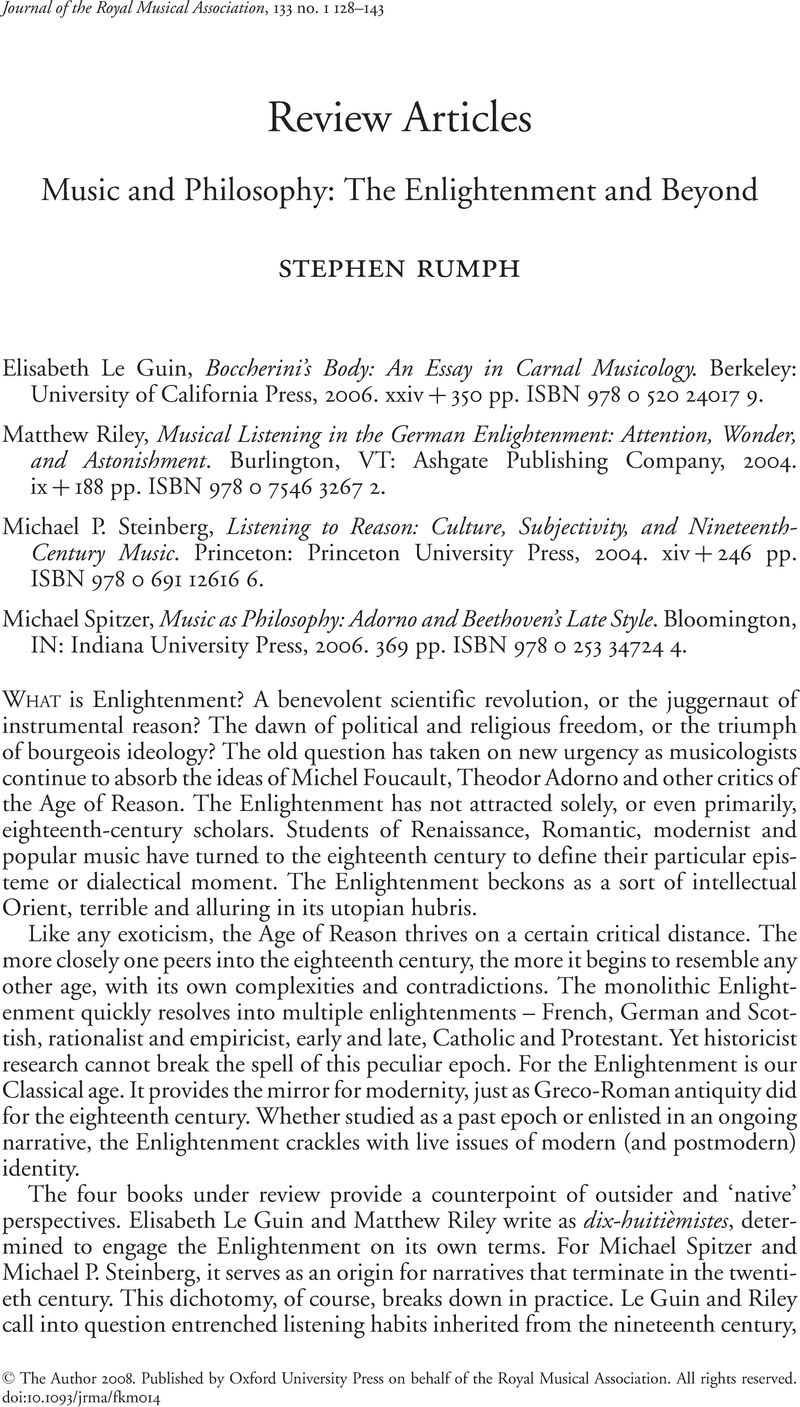No CrossRef data available.
Article contents
Music and Philosophy: The Enlightenment and Beyond
Published online by Cambridge University Press: 01 January 2020
Abstract

- Type
- Review Articles
- Information
- Copyright
- Copyright © 2008 Royal Musical Association
References
1 This passage exemplifies what James Hepokoski and Warren Darcy term the ‘mid-exposition trimodular block’; see ‘The Medial Caesura and its Role in the Eighteenth-Century Sonata Exposition’, Music Theory Spectrum, 19 (1997), 145–50.Google Scholar
2 Mihaly Csikszentmihalyi, ‘The Flow Experience and its Significance for Human Psychology’, Optimal Experience: Psychological Studies of Flow in Consciousness, ed. Mihaly and Isabella Csikszentmihalyi (Cambridge, 1988), 15–35.Google Scholar
3 Etienne Bonnot de Condillac, Essay on the Origin of Human Understanding, trans. Hans Aarsleff (Cambridge. 2001), 27.Google Scholar
4 Johann Gottfried Herder, Werke in zehn Bänden, i: Frühe Schriften, 1764–1772, ed. Ulrich Gaier (Frankfurt am Main, 1985), 713, 722.Google Scholar
5 Theodor Adorno, Kant's ‘Critique of Pure Reason‘, trans. Rodney Livingstone (Stanford, CA, 2001), 65.Google Scholar
6 Theodor Adorno, Negative Dialectics, trans. E. B. Ashton (New York, 1992), 118.Google Scholar
7 See Johnson, Mark, The Body in the Mind: The Bodily Basis of Meaning, Imagination, and Reason (Chicago. 1987), and Johnson and George Lakoff, Metaphors We Live By (Chicago, 1980). Spitzer introduced this metaphorical approach in his previous book, Metaphor and Musical Thought (Chicago, 2004).Google Scholar
8 Georg Wilhelm Friedrich Hegel, Philosophy of Right, trans. Thomas Malcolm Knox (Oxford, 1967), 183; Johann Gottlieb Fichte, Ausgewählte Werke in sechs Bände, vi, ed. Fritz Medicus (Darmstadt, 1962), 484. 499, 488.Google Scholar


